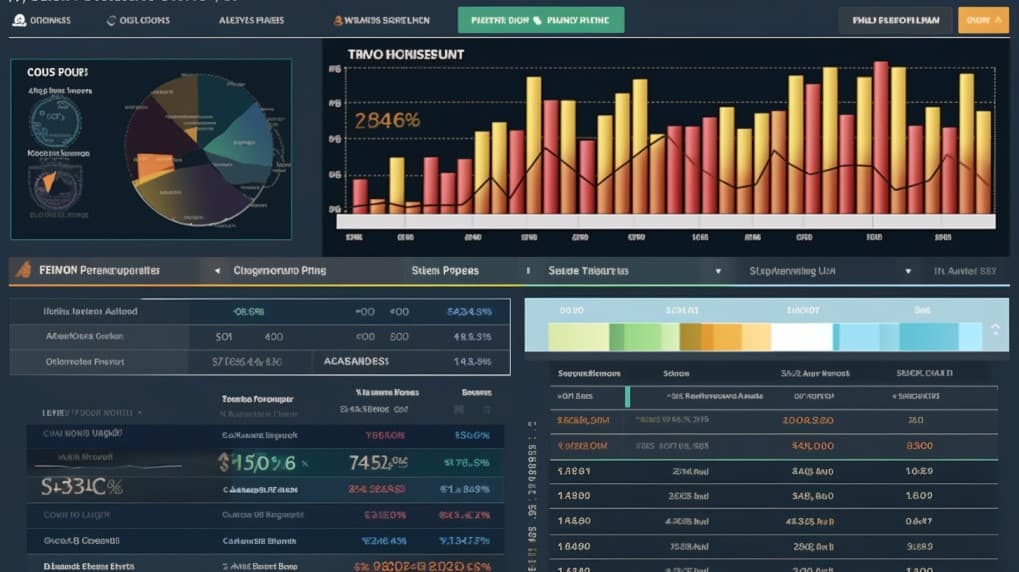
What is the RAVI ETF ?
In the world of finance, Exchange-Traded Funds (ETFs) have gained immense popularity due to their flexibility, diversification, and ease of trading. One such ETF that has been making waves in the market is the RAVI ETF. In this article, we will delve into the details of the RAVI ETF, understanding its underlying assets, benefits of investing in it, and essential considerations before making an investment.
ETF Overview:
The RAVI ETF seeks to achieve its investment objective by primarily investing in a portfolio of fixed-income instruments, including bonds, debt securities, and similar instruments issued by both U.S. and non-U.S. public and private sector entities. These issuers may include governments, agencies, municipalities, corporations, and banks. The average portfolio duration of the RAVI ETF is subject to forecasts for interest rates and usually remains within one year. It is important to note that duration plays a crucial role in determining the price sensitivity of fixed-income securities to changes in interest rates.
RAVI ETF Underlying and Exposure: What Does it Track and How?
The RAVI ETF focuses on investment-grade debt securities rated within the top four rating categories by a Nationally Recognized Statistical Rating Organization (NRSRO) or of comparable quality as determined by the Northern Trust Company Investment Policy Committee (NTI). Additionally, it may invest in fixed-income securities and instruments of foreign issuers in developed markets, including debt securities of foreign governments, and may allocate over 25% of its total assets to securities and instruments of issuers in a single developed market country. Moreover, the RAVI ETF may dedicate up to 20% of its total assets to fixed-income securities and instruments of issuers in emerging markets.
The ETF also has the option to invest in mortgage- or asset-backed securities, including to-be-announced (TBAs) transactions, on a when-issued, delayed delivery, or forward commitment basis. However, it will not exceed 10% of its total assets in non-agency mortgage or asset-backed securities. To manage currency risk, the RAVI ETF may engage in forward foreign currency transactions for hedging purposes.
 RAVI overlap What is the RAVI ETF ?
RAVI overlap What is the RAVI ETF ?
RAVI ETF: Benefits of Investing in this ETF
The RAVI ETF stands out from other ETFs as it is actively managed and does not aim to replicate the performance of a specific index. This allows the fund to have a higher degree of portfolio turnover than passive index-tracking funds. Investors benefit from the flexibility and expertise of active management in navigating changing market conditions. Moreover, with a focus on investment-grade debt securities, the RAVI ETF offers a balanced approach to fixed-income investing with reduced credit risk.
RAVI ETF: Considerations Before Investing
Before investing in the RAVI ETF or any other financial instrument, it is essential to consider several factors. As an actively managed ETF, the fund's performance largely depends on the fund manager's skill and expertise. Additionally, investors should assess their risk tolerance and investment objectives to ensure the RAVI ETF aligns with their financial goals. Furthermore, understanding the ETF's exposure to different sectors and regions is crucial for a well-diversified investment strategy.
Conclusion:
The RAVI ETF presents a compelling investment option for individuals seeking exposure to fixed-income instruments with a focus on investment-grade debt securities. With active management and careful selection of assets, the fund aims to deliver attractive risk-adjusted returns. However, as with any investment, thorough research and a clear understanding of individual financial goals are necessary before considering the RAVI ETF or any other investment vehicle.
Disclaimer: This article is for informational purposes only and does not provide investment advisory services.
RAVI ETF issuer
RAVI ETF official page
RAVI quote and analysis
Discover the top holdings, correlations, and overlaps of ETFs using our visualization tool.
Our app allows you to build and track your portfolio.
To learn more about the RAVI FlexShares Ultra-Short Income Fund, access our dedicated page now.
FAQ
What is the RAVI ETF?
The RAVI ETF, also known as the iShares U.S. Treasury Bond ETF, is an exchange-traded fund that aims to track the performance of the Bloomberg U.S. 1–5 Year Government/Credit Float Adjusted Index. This index includes medium and larger issues of U.S. government, investment-grade corporate, and investment-grade international dollar-denominated bonds with maturities between 1 and 5 years.
How does the RAVI ETF work?
The RAVI ETF follows an indexing investment approach, seeking to replicate the performance of its underlying index. It achieves this by holding a diversified range of securities that closely approximate the key risk factors and characteristics of the Index. The Fund will invest at least 80% of its assets in bonds held in the Index through a sampling process.
What types of bonds are included in the RAVI ETF?
The RAVI ETF primarily invests in U.S. government bonds, investment-grade corporate bonds, and investment-grade international dollar-denominated bonds. These bonds have maturities ranging from 1 to 5 years, offering investors exposure to short to medium-term fixed-income securities.
What are the average maturity and duration of the RAVI ETF?
As of December 31, 2022, the RAVI ETF seeks to maintain a dollar-weighted average maturity consistent with that of the underlying Index, which was 3 years. The Fund also aims to maintain an average duration consistent with the Index, which was also 3 years as of December 31, 2022.
What are the advantages of investing in the RAVI ETF?
Investing in the RAVI ETF provides a low-cost and efficient way to gain exposure to short to medium-term U.S. government and investment-grade corporate bonds. It offers diversification within the fixed-income space and may be suitable for investors seeking relatively stable returns with lower interest rate risk compared to longer-term bonds.